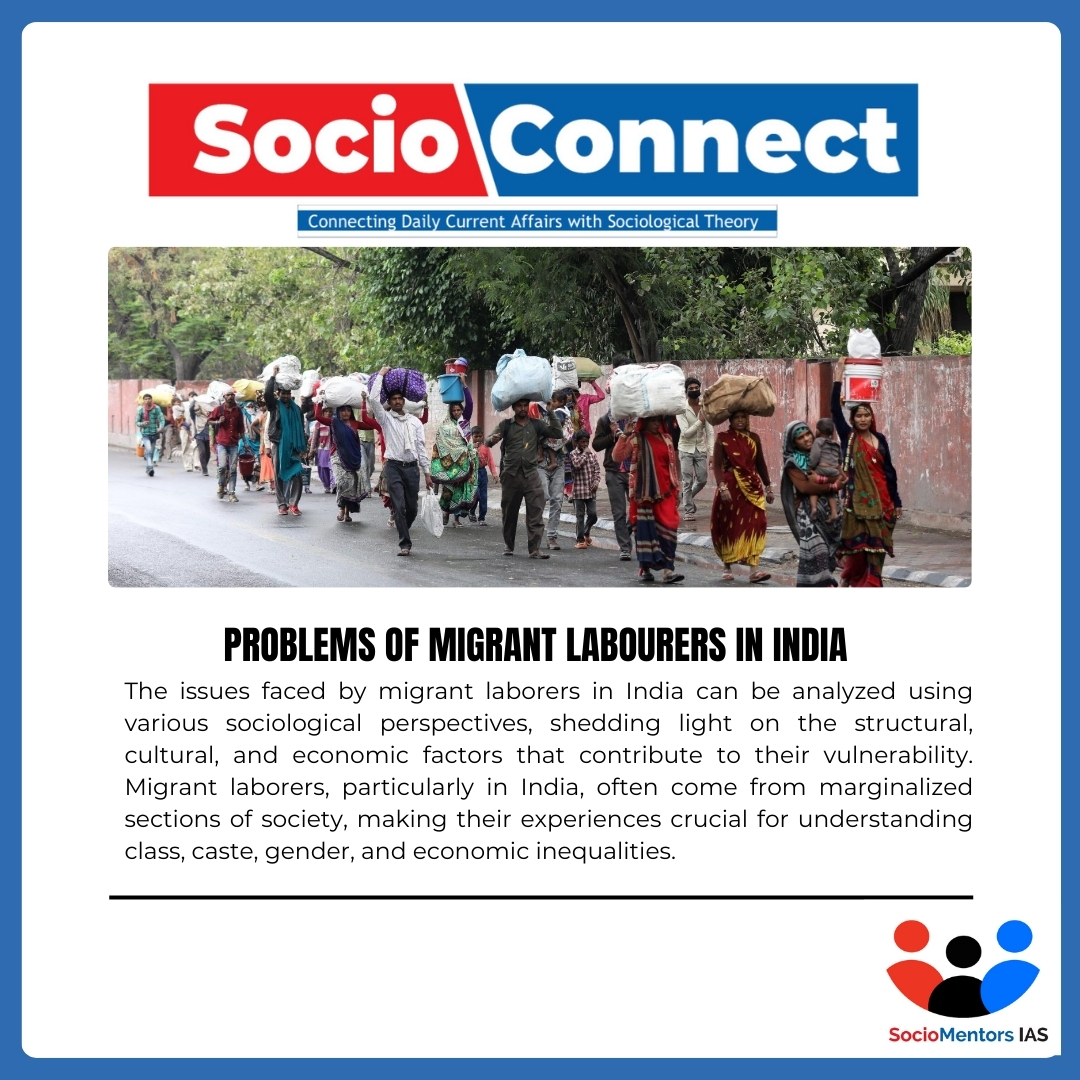
Blog
The Best Source to Enhance Your Sociology Optional Content



September 4, 2024
According to the ILO’s most recent estimates, there are an estimated 169 million migrant workers globally in 2019, constituting nearly 5% of the global workforce. Labour migrants, especially those in an irregular status, are at greater risk of occupational injuries and work-related diseases than their host communities, particularly due to employment in high-risk sectors, including in the 3D jobs – dangerous, dirty, demanding.
Migrant labourers often represent the reserve army of labour, which capitalists exploit to suppress wages and maximize profits. The systemic nature of capitalism leads to the devaluation of migrant labour, treating these workers as easily replaceable and thus keeping their wages low.
Challenges faced by Migrant Labourers:
• Housing Issue and slum inhabitation: Migrant labourers are forced to live in slums because of the inadequate supply of low-income ownership and rental housing options, which leads to the spread of informal settlements and slums, characterised by open spaces with unhygienic living conditions.
• Poor educational status of migrant children: Schooling of migrant children in India is compromised for various reasons, such as their mobility, disadvantaged backgrounds, and exclusionary experiences of schooling. According to Chandrasekhar and Bhattacharya, even though RTE Act, 2009 facilitates provisions, such as admitting children during any time of the year without documentary compulsion to an age-appropriate class, the actual modalities of migrant children’s enrolment, attendance and retention in schools remain ambiguous and challenging.
• Hostility and violence: Migrant labourers face prejudice and discrimination based on their nationality, ethnicity, or immigration status, which affects their social integration and mental well-being. Attack against migrant labourers from North East in Bangalore, Sons of Soil movement in Maharashtra, State governments like Haryana passing bills to protect jobs against outsiders are all examples of hostile attitude towards migrant labourers.
• Social Exclusion and Discrimination: Migrants may face social stigma and prejudice from the local population. They might be stereotyped as a threat to jobs or cultural values, leading to social exclusion and difficulty integrating into host communities. Cultural and language differences also can create communication barriers, hindering social interaction and making it difficult for migrants to navigate daily life and access essential services.
• Exclusion from social welfare: Most social welfare programmes, schemes and social security entitlements are domicile-specific with inter-state portability applicable only for the Public Distribution System (PDS) through the One Nation One Ration Card (ONORC) scheme. Labour Migrants, most of them with their families left behind in home districts, find better utility in source states to not replace their voting cards to ensure continuous receipt of such welfare schemes. Thus, despite being citizens, internal migrants lack rights in practice, making it difficult to legitimise their existence in the destination state.
• Political exclusion: Migrants are often unable to cast their votes due to systemic exclusions and economic constraints. This has made them invisible as a vote-bank and heightened their marginalisation.
• Separation and Family Strain: Migration often leads to separation from families, impacting emotional well-being and childcare responsibilities. This can strain familial bonds and social support networks.
• Power Imbalance vis a vis employer: The power dynamics between migrant workers and employers are often skewed. Migrants, especially undocumented ones, may be hesitant to report exploitation or unsafe working conditions for fear of losing their jobs or facing deportation.
• Higher degrees of alienation and anomie: The uncertainty and challenges of migration can lead to feelings of alienation and anomie resulting in stress, anxiety, and mental health issues.
• Insecure working conditions: migrants face challenges of meagre wages, adverse employment conditions, inadequate onsite living conditions, and almost absent social protection. Migrants seeking better employment opportunities tend to land up in the informal sector, remain vulnerable, and thus need protection against economic exploitation.
So migrant labourers, while contributing significantly to urban and rural economies, face a web of challenges which needs to be addressed through stronger worker protections, social inclusion initiatives, accessible healthcare, and support systems for separated families. Only through such multifaceted interventions can we ensure a just and equitable society for migrant labourers, fostering their well-being and enriching the social fabric of both sending and receiving communities.